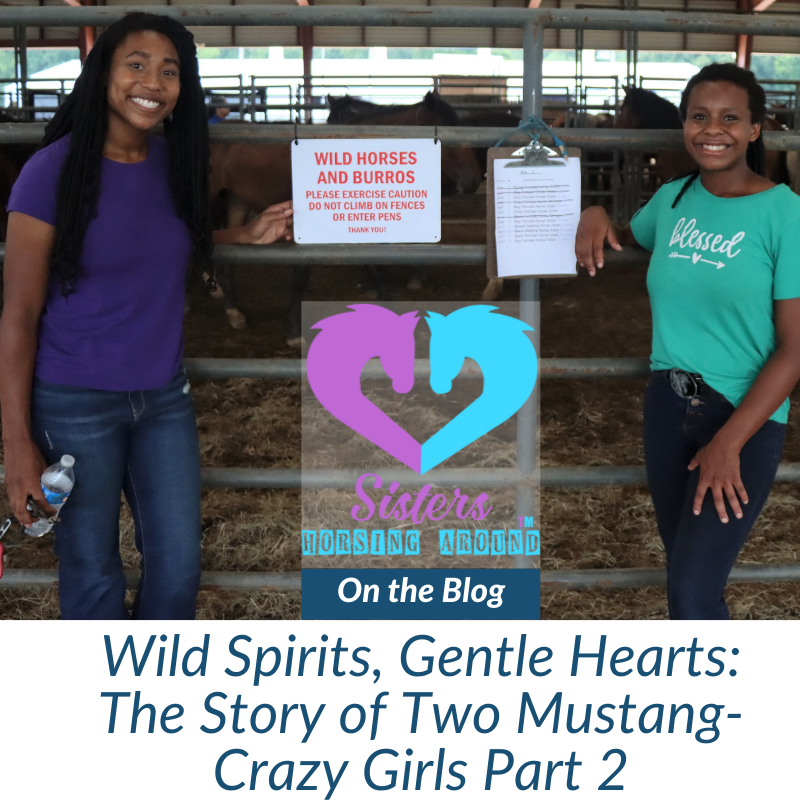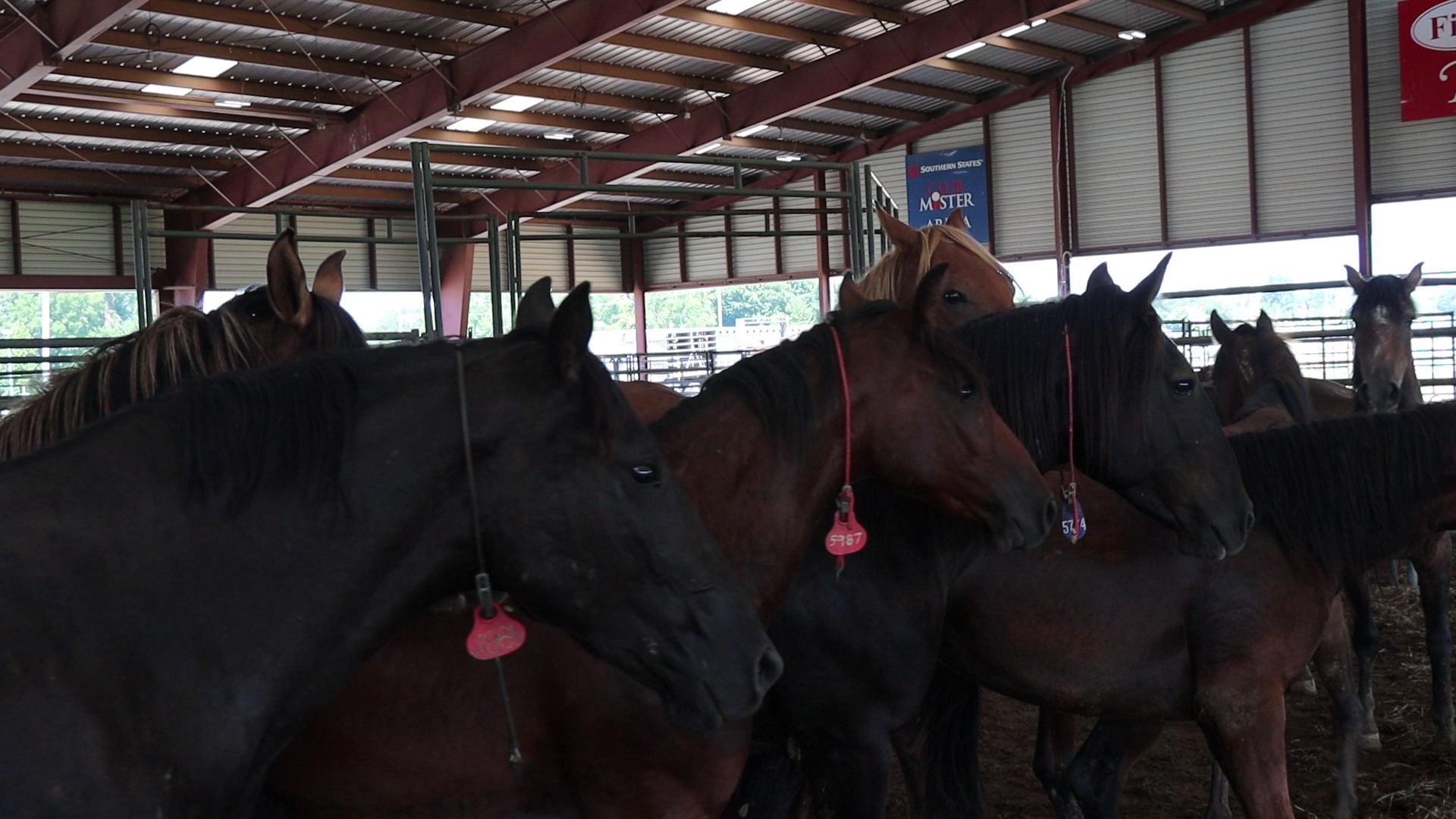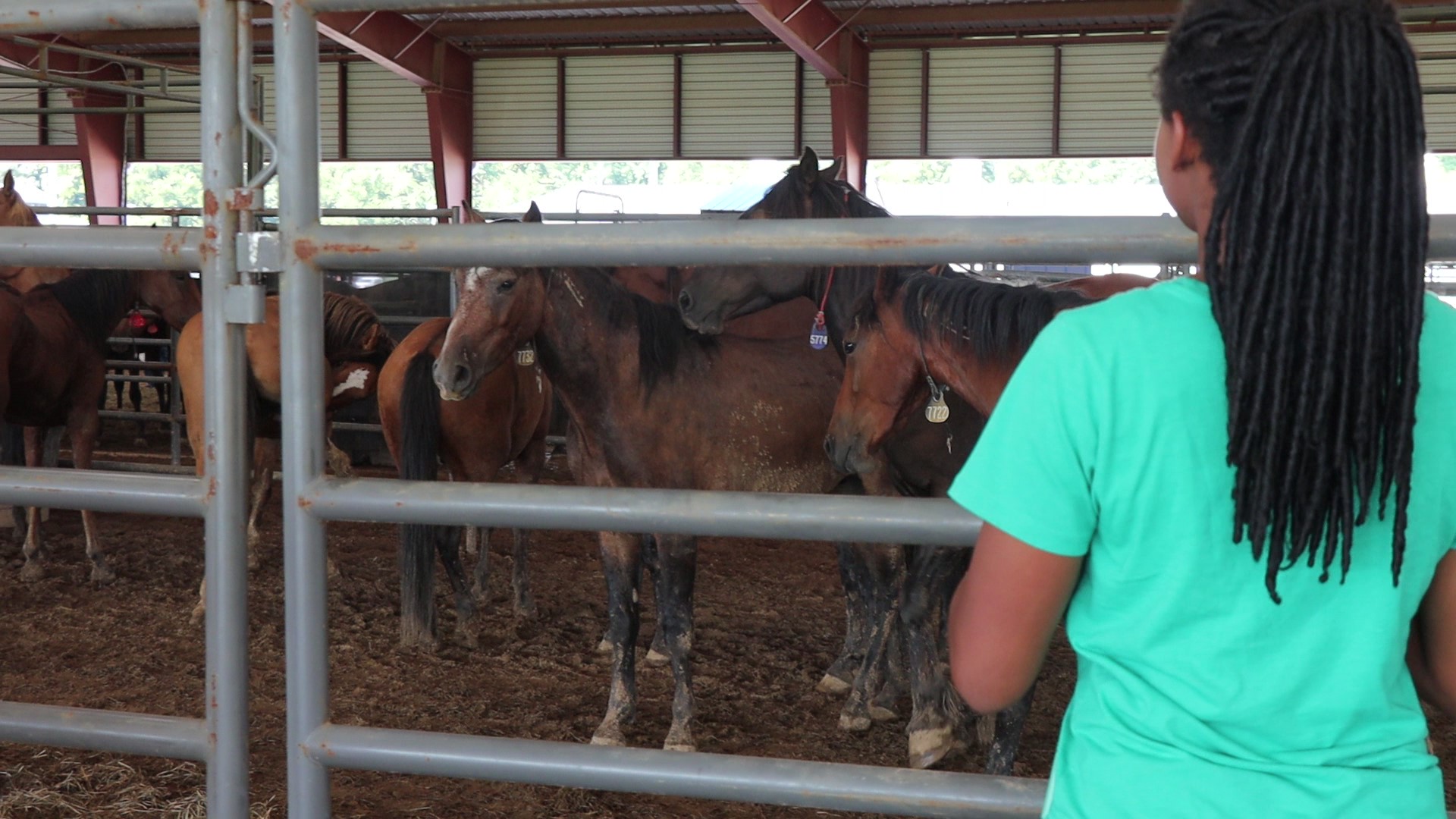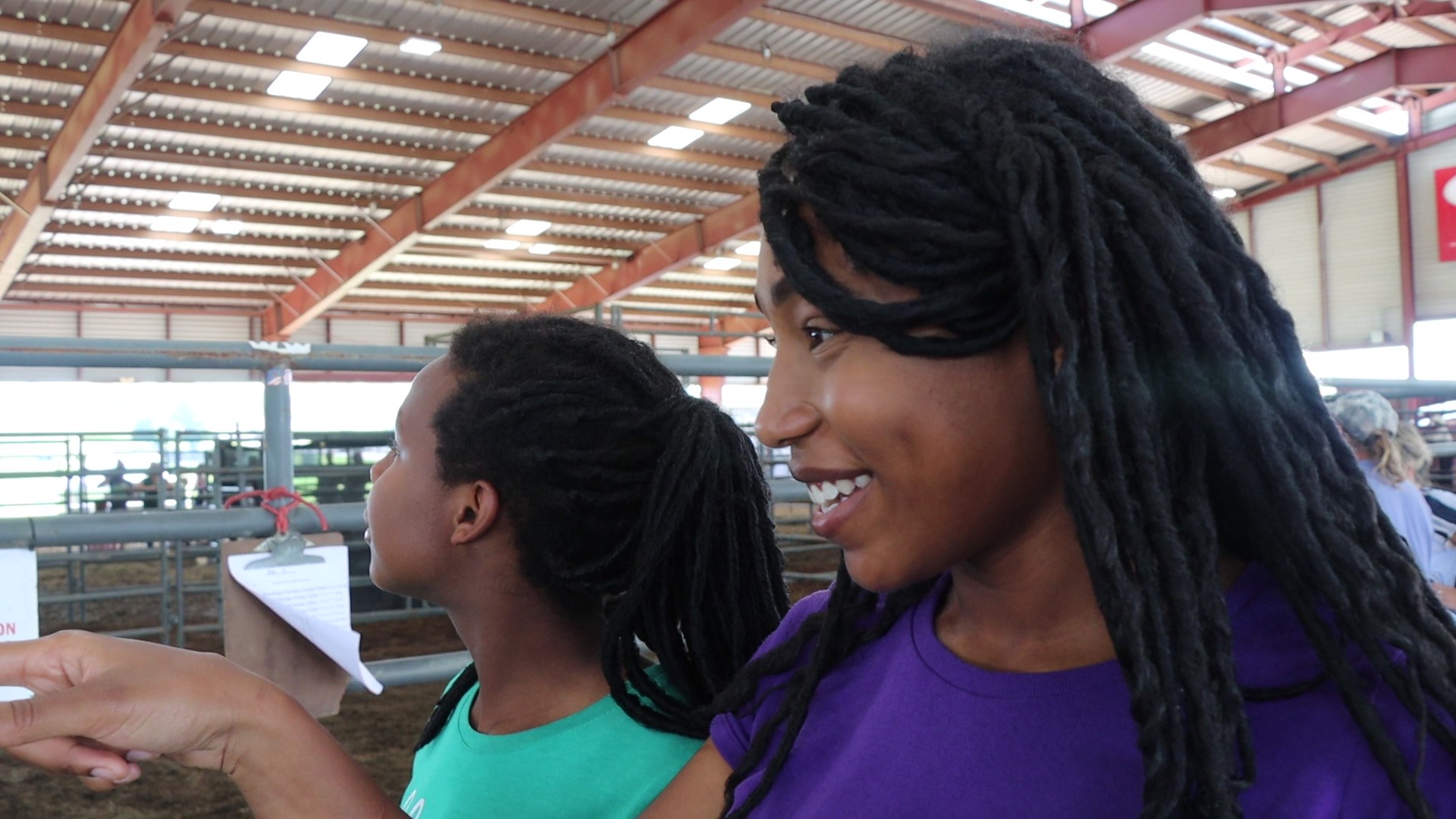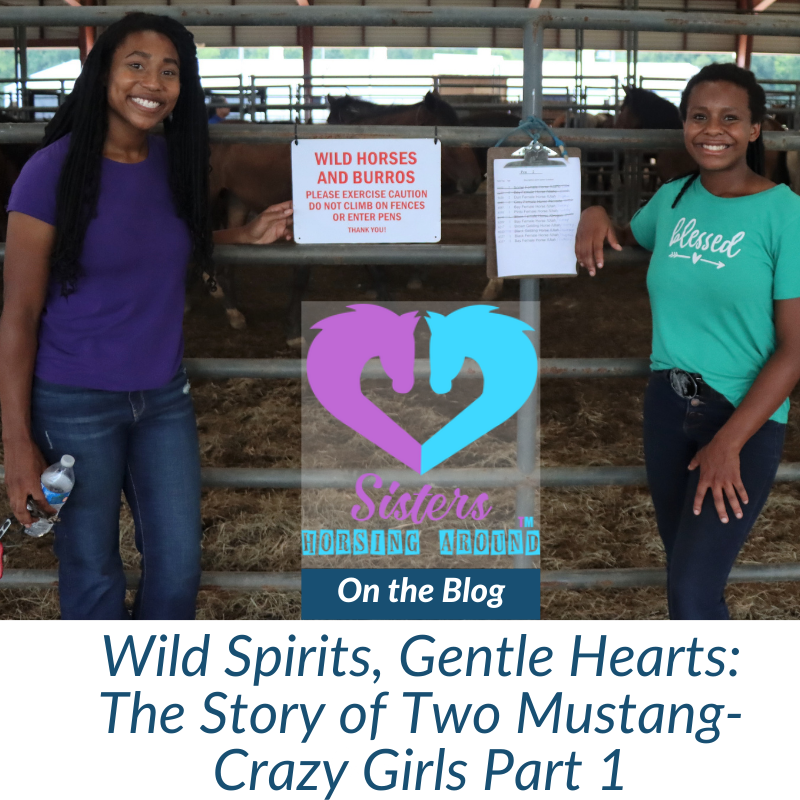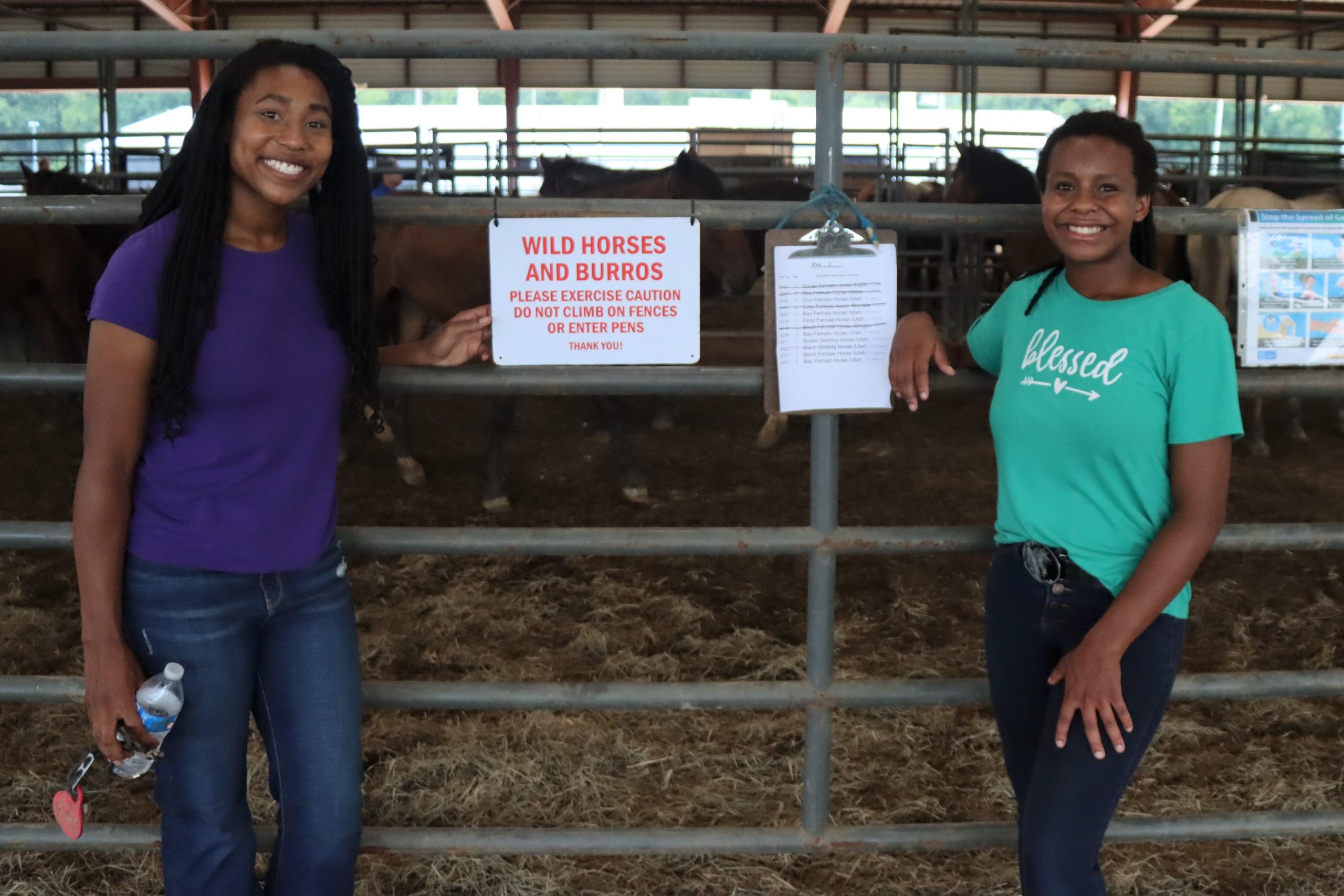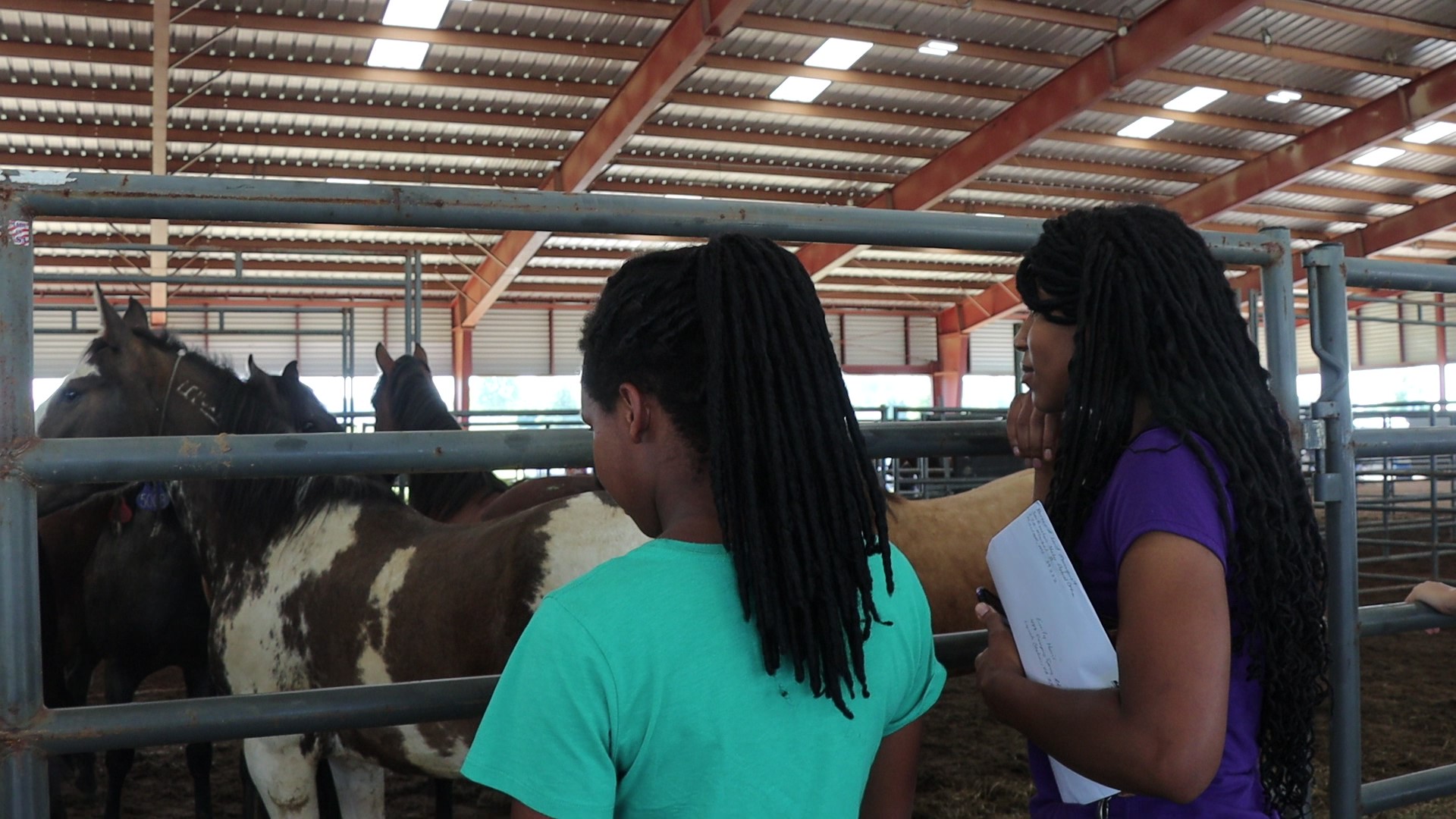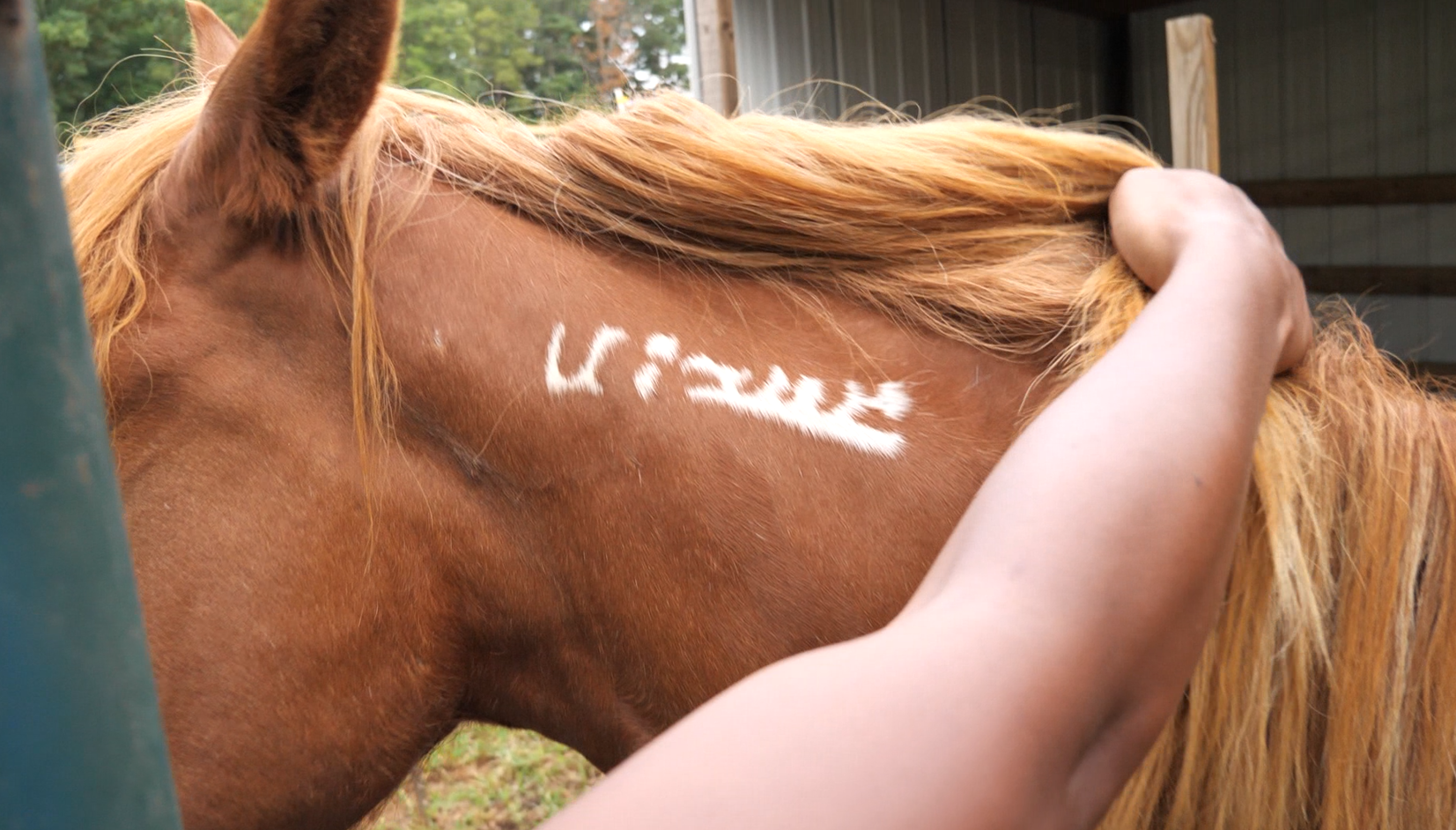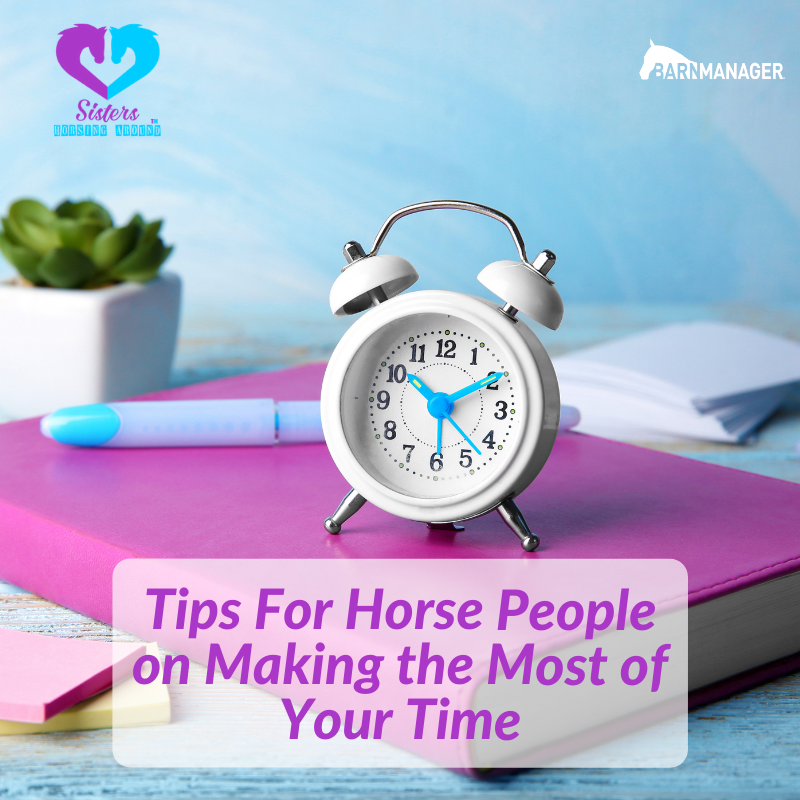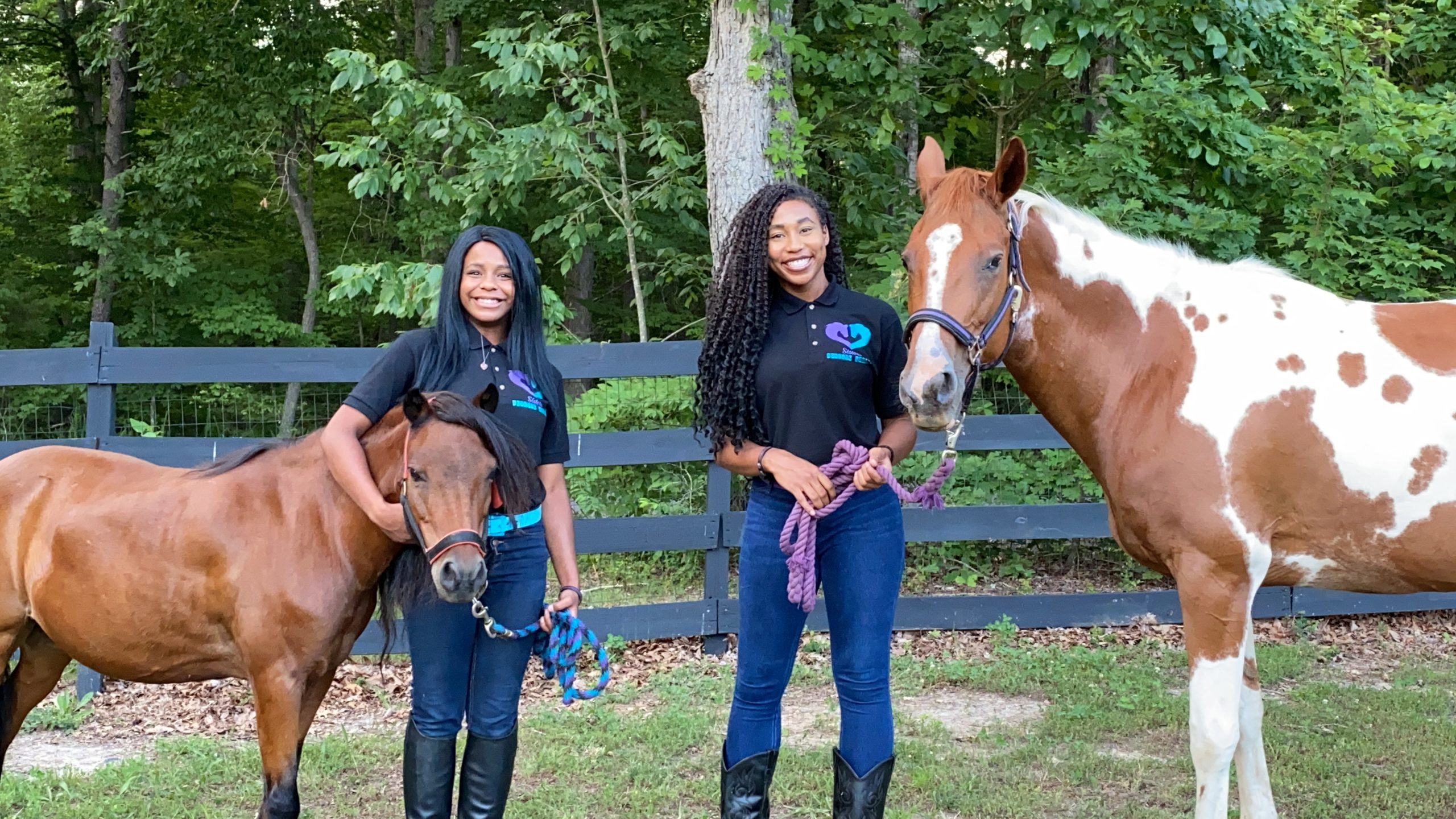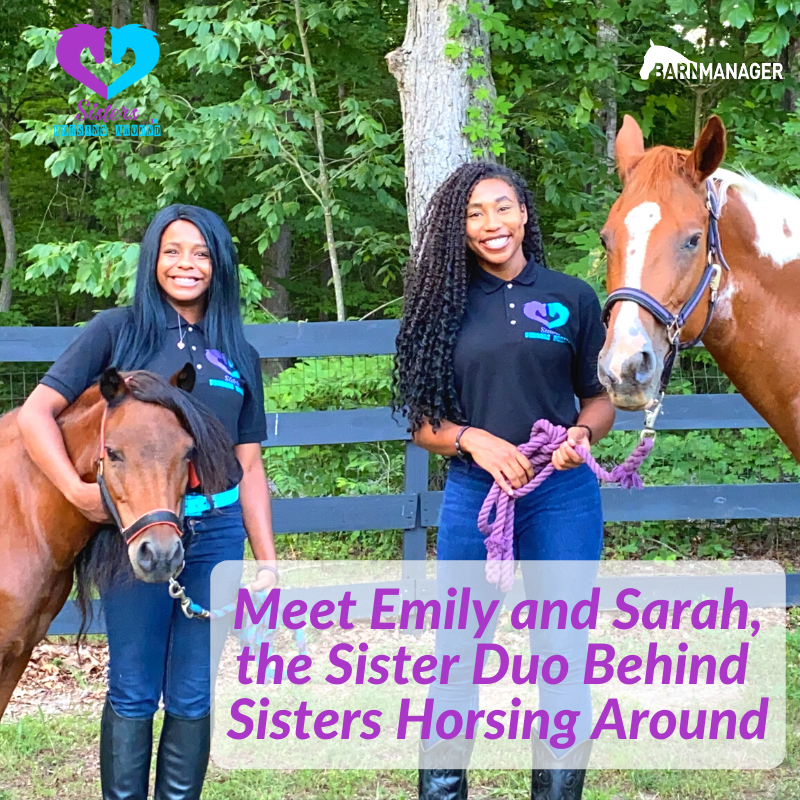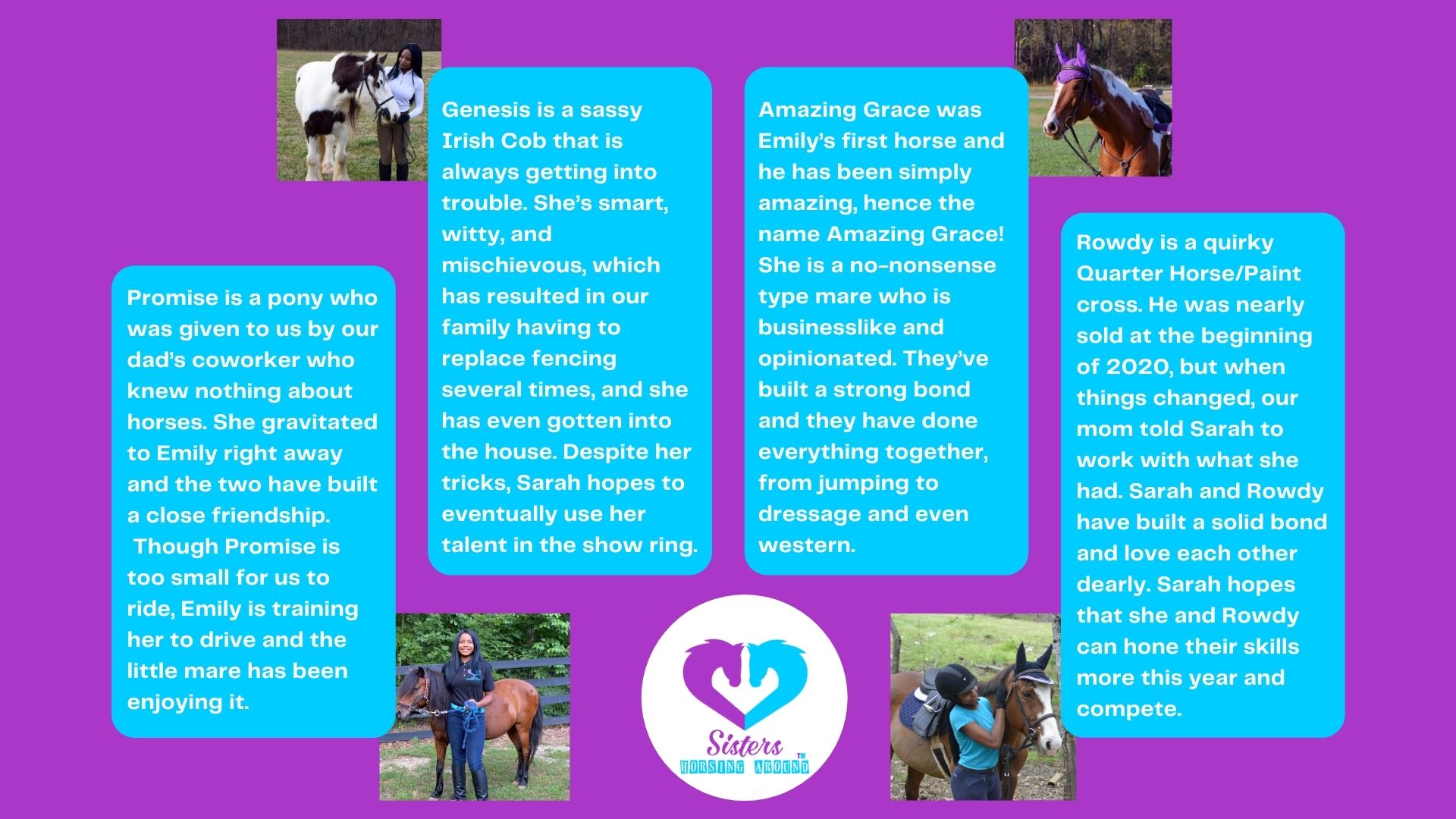Part Three of Wild Spirits, Gentle Hearts: The Story of Two Mustang-Crazy Girls
By Emily and Sarah Harris
Ever since we were younger, it was our dream to adopt a wild mustang. Every year we would look at the Bureau of Land Management’s mustang auctions, always hoping that one day… just maybe… we would bring one home.
This year our childhood dreams became reality.
For the conclusion of our journey, read below.
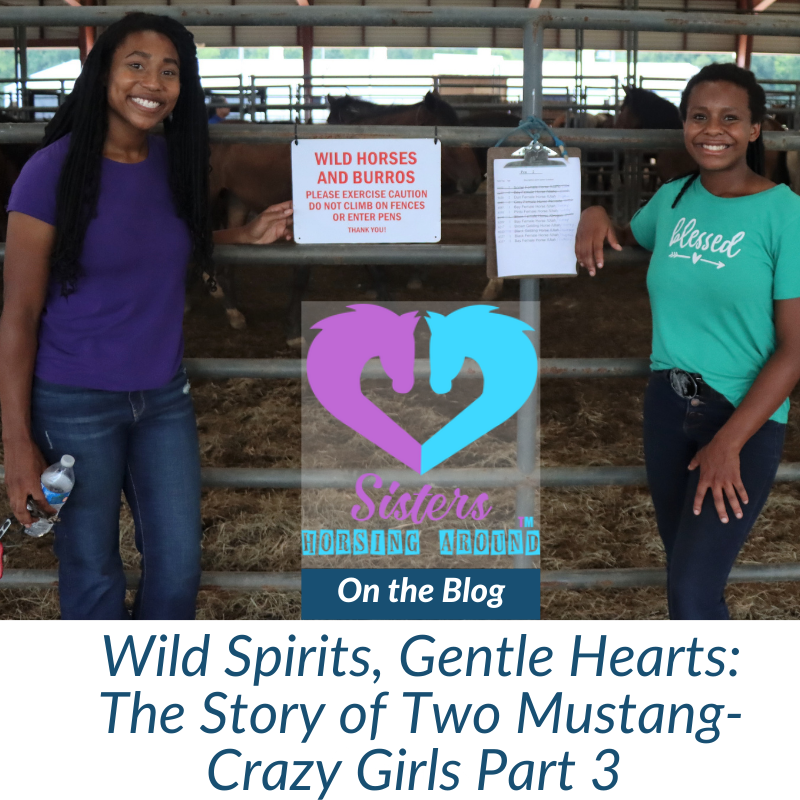
From Sarah:
Choosing Our Final Two Mustangs
After deciding to choose another horse instead of the one we bought on the online auction that turned out to have a lump on her stomach, I searched around, longing to find my next equine partner. We were all set with our first filly, and we knew we were approved for a total of three mustangs, so we could choose two more. I looked at the other horses in the pen, and my eyes stopped on a large sorrel gelding. He was the second-tallest one I’d seen, but his plain coloring caused him to be overlooked. He hadn’t been chosen yet, at least I hoped. The clipboard said he was five years old. I made a mental note of his tag number.
I still wanted to find one more horse and suddenly I saw her. She was a faded black color, and boy, was she a tank! I knew Emily would love her. The list said she was two years old and “brown” in color. I made a mental note of her tag number as well.
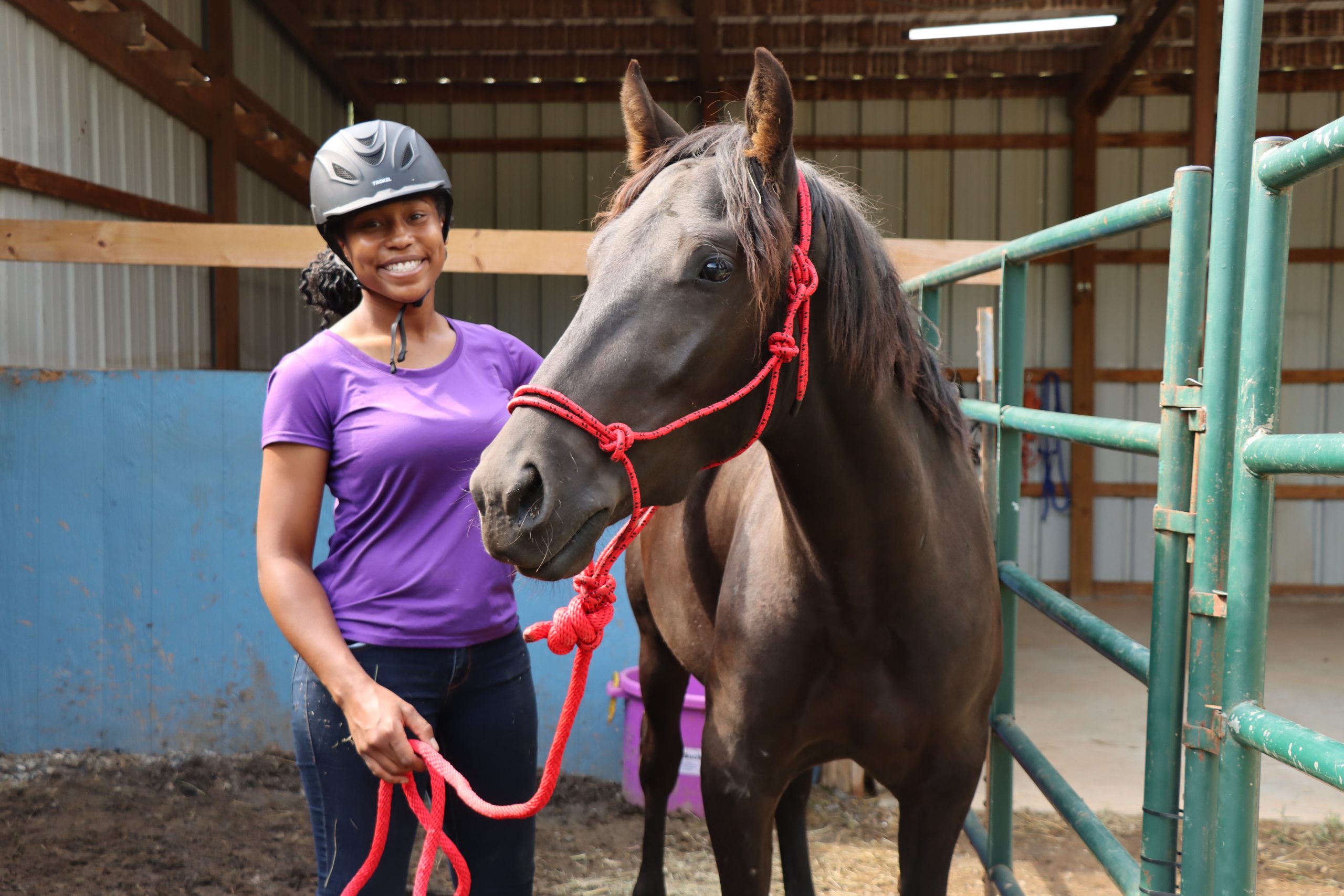
Emily and Hope
While we stood in line to fill out new adoption applications, Emily and I went over our plan for securing our next best friends. We would still get the sorrel filly we had won on the online auction, and then we would try to get the sorrel gelding and the brown filly I had seen. Now we had to wait. As each minute passed, the knots in my stomach got tighter. I prayed they wouldn’t be chosen by someone further up the line. Behind the adoption table was a list of all the horses there. When one was adopted, the BLM workers would cross out their tag number. My heart would lurch into my throat every time a worker stood up to cross out a listing.
We finally reached the adoption table and finalized the papers for our “internet horse,” received a refund for the filly that had a lump on her side, and completed our in-person adoption application for the other two. After paying $25 each for the two we found that day, it was official! We were bringing all three home!
After the horses were haltered, the BLM workers took off their neck tags and handed them to us. It was like being handed keys to a new car or home, but we were being handed the ownership of three beautiful wild horses! We watched our newest treasures load onto the trailer, then as we drove home, we felt them shake the trailer like we’ve never experienced before! We realized we were in for the time of our lives with this new adventure and, if we are honest, we almost second-guessed ourselves.
Bringing Three Mustangs Home
We have had experience training green horses, and we have raised a yearling and broke her to ride. We have had lots of “project horses” because that was mostly what we could afford, so we were used to working with inexperienced horses. But this was going to be the ultimate challenge; we would be training three completely wild, untouched, and untrained horses.
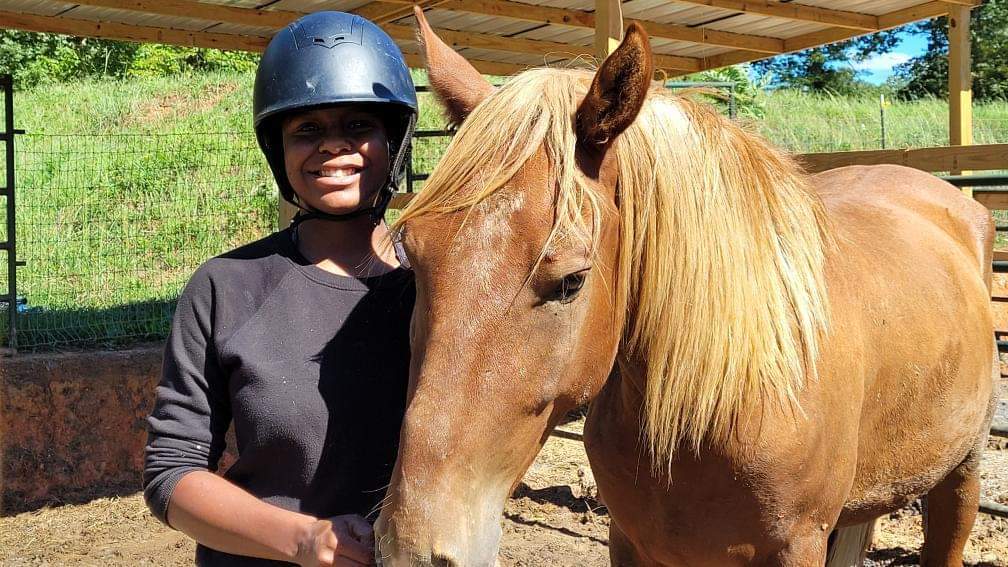
Sarah and Blaze
Emily and I decided to name the five-year-old sorrel gelding Blazin’ Wildfire, “Blaze” for short, because of his fiery sorrel color and wild nature. We can say that his name totally fits him! His health record showed he was from Chloride Canyon, Utah, and had been brought in only three months prior and was gelded the next month.
As for our two-year-old sorrel “internet adoption” filly, we named her Bold Faith and “Faith” for short. Her name was symbolic because she was the first mustang we bid on and won. Getting her was an act of faith. We noticed how confidently she walked up to us when we got her home. Her health records indicated she was from Antelope Valley, Nevada, and born in a holding facility because they listed an actual birth date instead of a capture date, which would explain her willingness to approach us and her open-minded nature.
Last, but certainly not least, we named the two-year-old brown (faded black-looking) filly High Hopes and “Hope” for short. We noticed she was very inquisitive and curious. She always had this hopeful look like she wanted to check us out, but she was hesitant. Since she was a replacement filly for the one we had passed on from the auction, we had “high hopes” she would be a good choice. We learned from her health records that she was from North Hills, Utah, and was rounded up in 2019. She had been in holding for two years.
Creating Partnership and Trust
We have had our mustangs for a few months, and we are completely in love with them. From day one, we have worked on building their trust. We have discovered that despite their wild spirits, they truly have gentle hearts. To take a wild horse and win its trust to the point that it would let you touch it is such a special experience. If you have ever heard mustang owners talk about that “first touch,” it is truly an INCREDIBLE feeling. Emily and I can honestly say that having wild horses has made a huge impact on our hearts and lives; we are completely hooked on them as our favorite type of horses. We are mustang crazy more than ever!
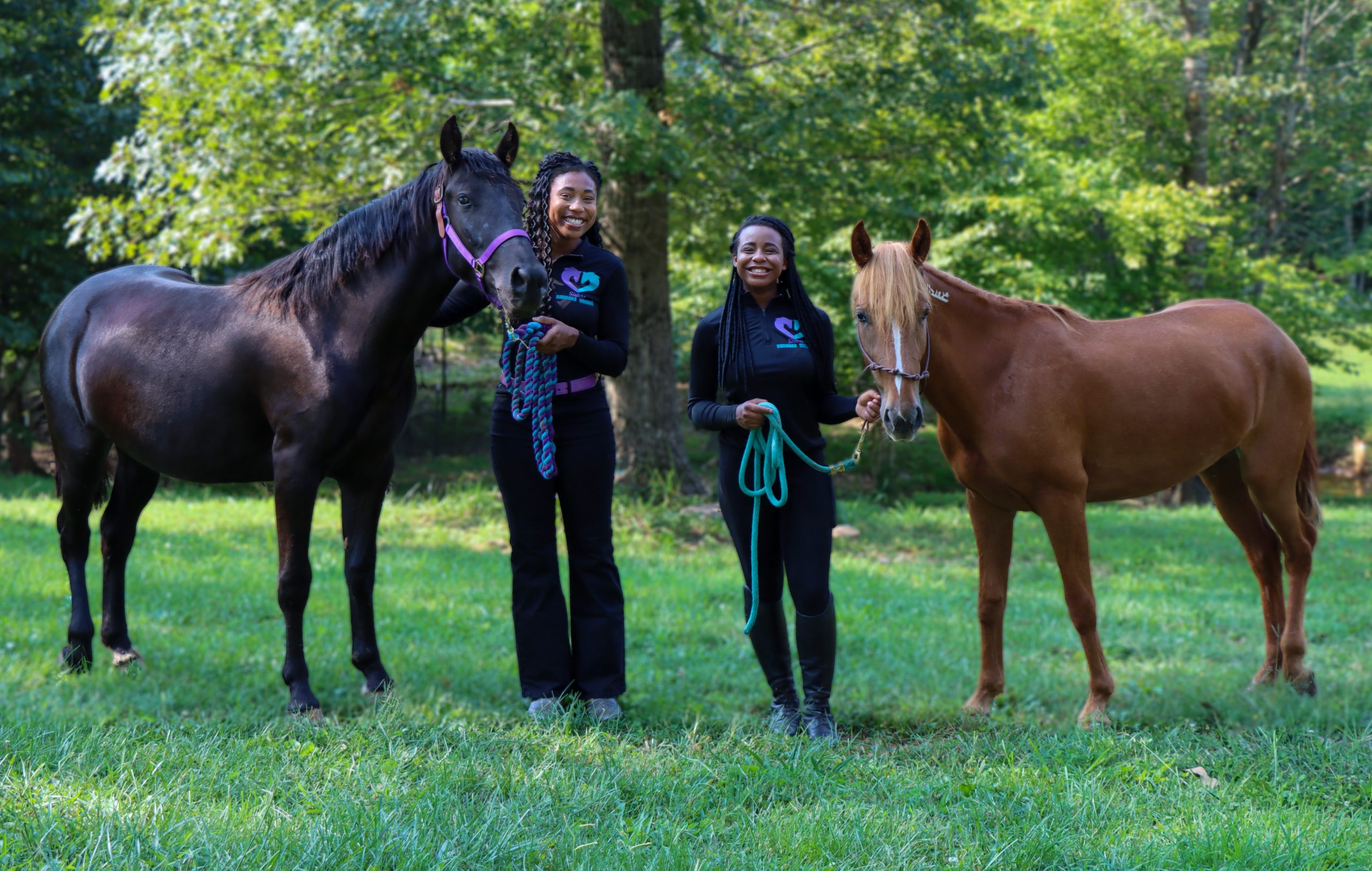
Hope and Faith enjoying their new home with Emily and Sarah
What makes our adoption even more memorable is that 2021 marks the 50th anniversary of the Wild Free-Roaming Horse & Burro Act, which was unanimously passed by Congress to protect wild horses and burros from capture, branding, harassment, or death. The Act makes it illegal for anyone to remove these animals from public lands, to cause their death, to process the animals into commercial products, or to otherwise use them in any way for private use without government approval. This Act declares that “wild, free-roaming horses and burros are living symbols of the historic and pioneer spirit of the West; that they contribute to the diversity of life forms within the Nation and enrich the lives of the American people…”
We can certainly say that they have enriched our lives. We are very happy to have welcomed these three precious wild horses into our hearts and homes!
To learn more about Sisters Horsing Around, visit www.sistershorsingaround.com and follow them on Facebook,Instagram, YouTube, Pinterest, and Twitter.
Find out more about the Bureau of Land Management Wild Horse and Burro Adoption and Sales Program on their website: https://www.blm.gov/programs/wild-horse-and-burro/adoptions-and-sales.
Have questions about utilizing BarnManager or want to give it a try for yourself? Request a live demo here!
